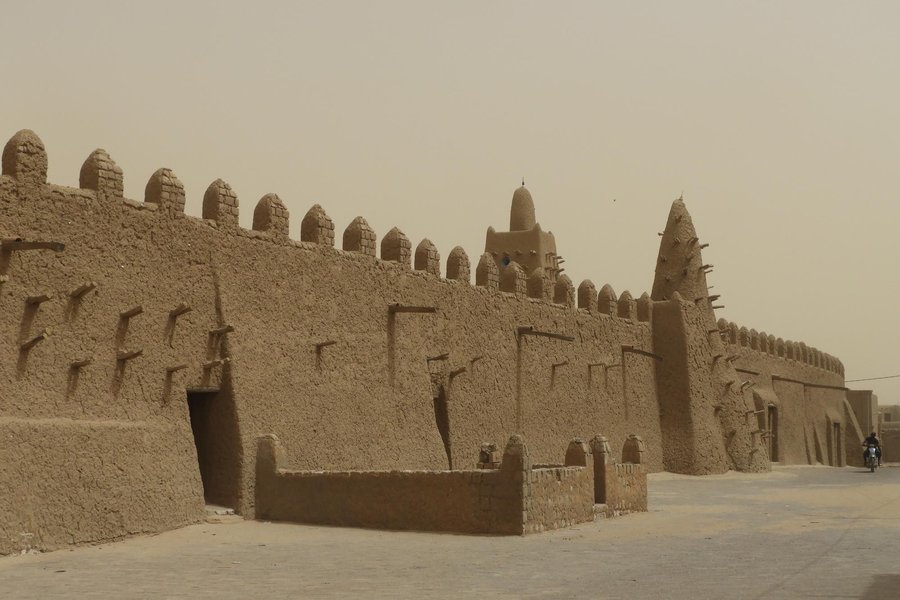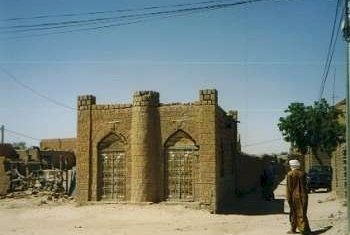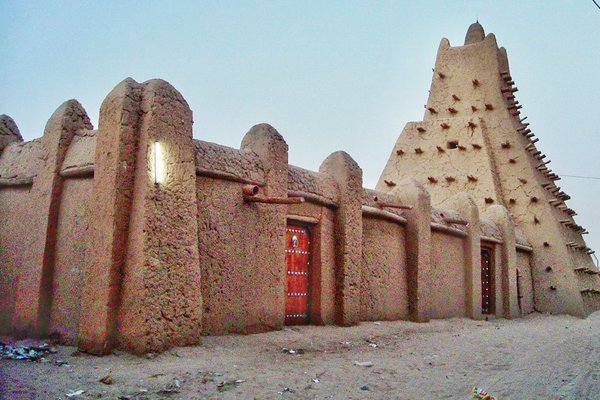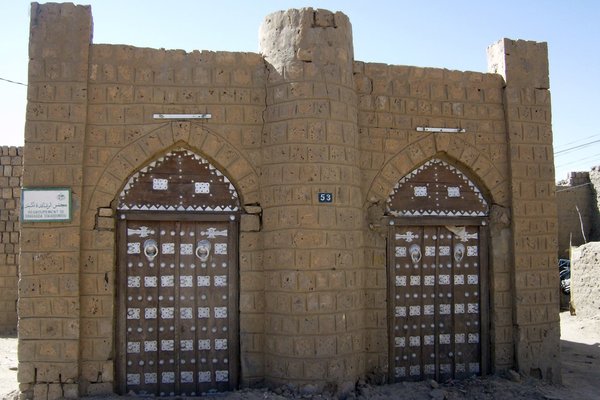Mali
Timbuktu
Timbuktu was an important commercial, spiritual and cultural centre on the southern trans-Saharan trading route.
It profited from the booming gold and salt trade in the Sahara region from the 15th century onwards. Housing a famous university, three large mosques and several madrassas, Timbuktu also played an important role in the early spread of Islam in Africa. The inscription actually narrows down to the three large mosques and sixteen cemeteries and mausoleums of Timbuktu. The buildings show traditional characteristic construction techniques.
Community Perspective: those who managed to visit found sand-covered streets and souvenir-selling Touareg. Due to terrorist/kidnapping threats, it nowadays is only accessible by flying in.
Site Info
Official Information
- Full Name
- Timbuktu (ID: 119)
- Country
- Mali
- Status
-
Inscribed 1988
Site history
History of Timbuktu
- 2012: In Danger
- threatened by armed conflict & to prevent trafficking in cultural objects from there
- 2008: Reinforced Monitoring
- New constructions near mosques
- 2005: Removed from Danger list
- 1990: In Danger
- threat of sand encroachment
- 1988: Inscribed
- Inscribed
- 1981: Deferred
- At Bureau - Needs better delimitation etc
- 1980: Deferred
- In Danger
- threatened by armed conflict & to prevent trafficking in cultural objects from there Since 2012
- Type
- Cultural
- Criteria
- ii
- iv
- v
Links
- UNESCO
- whc.unesco.org
- Related
-
- exploretimbuktu.com — Explore Timbuktu
All Links
UNESCO.org
- whc.unesco.org — whc.unesco.org/
Related Resources
- exploretimbuktu.com — Explore Timbuktu
News Article
- Aug. 12, 2025 latimes.com — Saved from militants, Timbuktu’s famed manuscripts return home
- Aug. 29, 2023 reuters.com — Islamist blockade on Timbuktu stops food and aid as prices spike
- Sept. 27, 2016 reuters.com — Islamist rebel gets 9 years imprisonment for Timbuktu destruction
- Feb. 5, 2016 whc.unesco.org — 900-year-old consecration ceremony held for the Timbuktu mausoleums
- July 21, 2015 theguardian.com — Timbuktu's historic tombs restored
- July 1, 2015 whc.unesco.org — Timbuktu mausoleums will be rebuilt by end of July 2015
- March 20, 2014 whc.unesco.org — Reconstruction of WH mausoleums starts in Timbuktu
- Sept. 30, 2013 un.org — Timbuktu mosque damaged in suicide attack
- June 9, 2013 allafrica.com — Timbuktu's Cultural Heritage More Damaged Than First Estimated
- Jan. 29, 2013 irishexaminer.com — Mali rebels burn library containing priceless manuscripts
- July 11, 2012 bbc.co.uk — Tombs in Timbuktu's Djingareyber mosque 'destroyed'
- July 2, 2012 dailymail.co.uk — Extremists attacked three sacred Muslim tombs with shovels
- June 30, 2012 bbc.co.uk — Timbuktu shrine damaged by Mali Ansar Dine Islamists
- May 6, 2012 edition.cnn.com — Rebels burn Timbuktu tomb
- April 3, 2012 bbc.co.uk — Mali Tuareg rebels control Timbuktu
- Nov. 25, 2011 bbc.co.uk — Foreigners abducted in Timbuktu
- Feb. 28, 2010 cbsnews.com — 15 Dead In Mali After Timbuktu Mosque Stampede
Community Information
- Community Category
- Urban landscape: African
Travel Information
Red Zone Travel Advisory
Recent Connections
-
No Map
-
Red Zone Travel Advisory
Mali fully off-limits -
Niger Basin
Situated c20kms from the Niger on highe…
Connections of Timbuktu
- Individual People
-
-
Giovanni Belzoni
died of dysentery in Benin (modern Nigeria) trying to reach Timbuktou in 1823 -
Leo Africanus
Probably visited by him around 1510. His description of it in the Descrittione was one of the sources for the fabled vision of the city which Europeans had, and led to their attempts to reach it in the 18th/19th centuries -
Ibn Battuta
-
- Geography
-
-
Sahel
-
Sahara
"its important role of commercial, spiritual and cultural centre on the southern trans-Saharan trading route" (OUV) -
Niger Basin
Situated c20kms from the Niger on higher ground away from flooding -
Disputed territories
Claimed by by the Tuareg rebels of the MNLA, as part of the nation of Azawad
-
- Trivia
-
-
Fatal Accidents or 'disasters'
At least 26 people have been crushed to death in a deadly stampede in the famous Djinguereber mosque in the city of Timbuktu (Feb 2010)See www.rttnews.com
-
In Video Games
Civilization VI
-
- History
-
-
Berbers
In the first half of the 15th century the Tuareg tribes took control of the city for a short period until the expanding Songhay Empire absorbed the city in 1468. (Wiki). The city featured a Tuareg majority until the Tuareg Rebellion and the following Northern Mali Conflict. -
African Kingdoms
Songhai Empire (1430s - 1591)See en.wikipedia.org
-
Forbidden City
Closed to non-islamic visitors for centuries -
Songhai Empire
captured from the Tuaregs (who had taken it from the declining Malian empire 30 years earlier) by the Songhai Empire around 1468 -
Trans Saharan trade routes
Merchants from Ghadames, Awjilah, and numerous other cities of North Africa gathered there to buy gold and slaves in exchange for the Saharan salt of Taghaza and for North African cloth and horses. (Wiki)
-
- Damaged
-
-
Iconoclasm
Destruction of Sufi cemeteries and mausolea of saints by Tuareg rebels of Ansar DineSee en.wikipedia.org
-
'Threatened' by Drought or Desertification
In 1990 was placed on the "WHS in danger" list because of the encroachment of desert sands
-
- World Heritage Process
-
-
Former In Danger List sites
1990-2005
-
No Map
-
Twice on the endangered list
1990 and 2012 -
Inscribed at third attempt or more
Def 1980, Def 1981, Ins 1988
-
- Religion and Belief
-
-
Notable mosques
Djinguereber Mosque, 1327, Sunni -
Sufism
Is said to contain the tombs of 333 Sufi Saints. E.g Sidi Mahmoud Ben Amar See WikiSee en.wikipedia.org
-
- Human Activity
-
-
Slavery
-
Gold production
-
Salt
Salt trade
-
- Constructions
-
-
Cemeteries
"the nomination enumerates 16 cemeteries and mausoleums" (AB evaluation) -
Mausolea
"the nomination enumerates 16 cemeteries and mausoleums" (AB evaluation)
-
- WHS on Other Lists
-
-
U.S. Ambassadors Fund
Preservation of Medieval Islamic Manuscripts at Timbuktu (2004), Training in the Preservation of Ancient African and Islamic Manuscripts (2002), Preservation of Ancient Islamic Manuscripts in Timbuktu (2001) -
World Monuments Watch (past)
Cultural Heritage Sites of Mali (2014)See www.wmf.org
-
- Timeline
-
-
Built in the 16th century
"The market city of Timbuktu reached its apex under the reign of the Askia (1493-1591)., Three essential monuments ..... fortunately still stand as testimony to the grandeur of Timbuktu. ...... The mosque of Djingareyber was built by the sultan Kankan Moussa after his return in 1325 from a pilgrimage to Mecca. Between 1570 and 1583 the Qadi of Timbuktu, Imam Al Aqib, had it reconstructed and enlarged,... (The) mosque of Sankore, built during the Mandingue period, was restored ..... between 1578 and 1582.... The mosque of Sidi Yahia, south of the mosque of Sankore, was probably built around 1400...... The sanctuary was restored in 1577-1578..." (AB)
-
- Science and Technology
-
-
Universities
Koranic Sankore University
-
- Visiting conditions
-
-
Red Zone Travel Advisory
Mali fully off-limits
-
- WHS Names
-
-
Named after individual people
Buktu, the woman who was in charge of guarding the village when it was established
-
News
- latimes.com 08/12/2025
- Saved from militants, Timbuktu’s f…
- reuters.com 08/29/2023
- Islamist blockade on Timbuktu stop…
- reuters.com 09/27/2016
- Islamist rebel gets 9 years impris…
Recent Visitors
Visitors of Timbuktu
- Ali Zingstra
- Ammon Watkins
- Atila Ege
- CynthiaSam
- Els Slots
- Eric Lurio
- Erik Jelinek
- Eva Kisgyorgy
- Fernweh
- Grzegorz Andruszkiewicz
- Harry Mitsidis
- Iain Jackson
- Kjlauer
- Kurt Lauer
- marcel staron
- Marcobrey
- Martin
- Mikko
- MMM
- Morodhi
- Nihal Ege
- Paul Schofield
- Pieter Dijkshoorn
- Roman Bruehwiler
- Solivagant
- Szucs Tamas
- Westwards
Community Reviews
Show full reviews
Let's just call it the third pole. Timbuktu was one of those places of legend that it was impossible to get to. That is until the turn of the 19th century, when French and British explorers finally set foot in the place.
Then there was the great disappointment the golden city in the middle of nowhere turned out to be made of adobe and dust. It wasn't even a city, just a largish town with the great river Niger on the one side and the great Sahara desert on the other. The caravans from the salt mines brought the valuable edible rocks to the boats waiting on the river in exchange for other goods.
The glorious city of treasure was a myth, or so it seemed to the west.
The true treasures of Timbuktu are the ancient manuscripts that the locals have preserved since the demise of the great University centuries before, and there is, of course, the river, without which, the town could not exist, and yes, the salt which is brought in trucks and not on camels, and the river irrigates vast rice paddies, which from the air looks extremely strange, a green finger reaching into the desert.
The rice feeds the local population, and the price of salt isn't what it used to be and the Toregs, the tribe indigenous to the area has lost most of their camel's drought and disease, not to mention a rebellion against what was then a dictatorial government a few decades …
Keep reading 0 comments
The past of Timbuktu past is more glorious than its present. Now it is a little town on the edge of the Sahara, with sand-covered streets and souvenir selling Toeareg. The mosques are worth a visit, as are the old houses in the center of town with their beautiful manufactured doors.
My most remarkable moment was that when I arrived on Friday afternoon, its male inhabitants with their colourful robes just left the mosques. They made a wonderful contrast with the sandy streets and buildings.
Keep reading 0 comments

